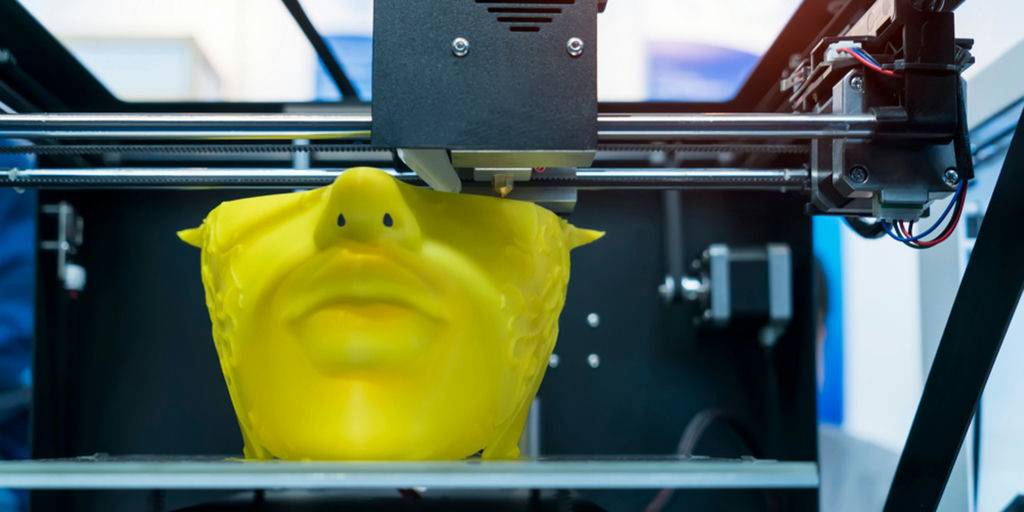
Introduction to Additive Manufacturing Education
Additive manufacturing (AM) is a set of processes by which physical objects are made from digital files generated by computer-aided design software. The term encompasses seven different technologies such as powder bed fusion, material jetting, directed energy deposition, binder jetting, vat photo polymerization, material extrusion and sheet lamination. These technologies use a variety of feedstock materials such as polymers, metals, ceramics, and concrete by systematically depositing layer upon layer to create a near net shape of the final part required.
As opposed to traditional machining techniques like CNC, milling, machining, in AM, material is added instead of removed from a block or a billet. AM developed out of rapid prototyping technologies, invented thirty years ago. The pace of evolution of the technology to additive manufacturing is noteworthy caused mainly by quality and value addition which Additive manufacturing proposes in the product development process: shorter lead times, less waste, and competitive products. With the emergence and proliferation of the technology, there is an increased demand of workforce which can understand principles of Additive manufacturing processes and optimally apply it to solve real life world problems.
This paper investigates existing efforts in Additive manufacturing education and its implications in engineering education research. Inferences from the review can provide a springboard for educators and researchers in engineering education to address the following question: “How can we bridge the gap between the ever increasing demands of an industrial workforce which could understand Additive Manufacturing and the current state of the system?”
The Need for More Workforce equipped with Additive Manufacturing Skills
The emergence of additive manufacturing has also opened up new possibilities in material science, design and fabrication of complex structures which were nearly impossible to make with conventional manufacturing processes. Due to the widespread of this technology in a short time, the industry is currently facing challenges with lack of design for AM principles, process guidelines and standardization of best practices. As per Deloitte’s review report, the global 3D printing industry is poised to grow from $12.8 billion in revenue in 2018 and it is expected to exceed $21 billion by 2020. With prompt adoption of this technology in the industry, the demand for workforce equipped with AM skills is poised to increase exponentially. The diverse field of AM sciences requires a combination of engineering and soft skills for a successful career path. Moreover, the key to success of AM is its variety of applications such as medical, automotive, aerospace, art, and construction applications, which requires domain knowledge expertise coupled with appreciation of AM sciences. Such unique combination of skills makes the workforce required in Additive manufacturing recruitment – distinctive and unorthodox.
Accelerating efforts towards growing the talent pool capable of learning and applying Additive manufacturing principles is correspondingly essential as increasing awareness and adoption of the technology. AM is a major component of the third industrial revolution which could create more job opportunities in developed nations. Given that automation capabilities play a major role in shaping Industry 4.0, digital factories of the future would not necessarily be labor intensive. AM could be the United States’ answer to labor-intensive manufacturing hubs like China, India and Vietnam and can help decentralize manufacturing.
The talent gap is not only restricted to AM, but manufacturing overall. As per the latest Society of Manufacturing Engineers report, nine of ten manufacturers have difficulty recruiting desired talent. There is no doubt that to speed up the adoption of AM and make it a widely adopted manufacturing process, the question of the current system’s readiness to absorb the transition has to be addressed with adequate quantum of skilled workforce. The “2009 Roadmap for Additive Manufacturing” suggests development of university courses and educational materials at the undergraduate and graduate level. The need to develop workforce for AM is one of the core emphasis of the Roadmap, since unfamiliarity with AM capabilities is seen as a major barrier to adoption of AM. Similarly, these problems can be identified as key obstacles to generate talent in Additive Manufacturing: (1) The Millennial generation’s negative perception of the manufacturing industry; (2) Lack of interdisciplinary STEM skills; and (3) Lack of practical hands-on or on-the-job training.
Such an acute shortage of human labor calls for a systematic plan to address the workforce shortage. In an effort to address the problem, The National Science Foundation held a workshop in 2015 to discuss the educational needs to equip the industry and academic system for Additive manufacturing. A unique cohort of individuals from academia, industry, and government formulated the way forward to inculcate AM in education at all levels. As per the NSF workshop report for additive manufacturing education, the following key areas were identified which helps further dissect the problem :
While many of these key areas are technical in nature, many also are inherently human, related to foundational questions that engineering education research is working to tackle. However, to date, the rigorous engineering education research community has not yet launched efforts to study creativity, design thinking, teaming, or problem solving in the context of Additive Manufacturing either with respect to students or practicing engineers. The following sections review educational efforts to date, summarize main directions for AM education, and promote areas for inclusion of engineering education research within the emergence of AM education.
© 2019 American Society for Engineering Education. ASEE (Annual Conference) Proceedings, (June 15 -19, 2019), held at Tampa Convention Center, Florida.
The U.S. Navy’s Maritime Industrial Base (MIB) Program, General Dynamics Electric Boat, and Lincoln Electric…
Caracol, a global leader in robotic large-format additive manufacturing, and RusselSmith, an ISO-certified provider of…
Works cited Additive Manufacturing Forecast 2025: Market - AMFG, accessed on June 28, 2025, https://amfg.ai/2025/02/12/additive-manufacturing-forecast-2025-market/…
National Additive Manufacturing and Innovation Company (NAMI), a joint venture between Dussur and 3D Systems…
The LEGO Group has announced the release of its first-ever mass-produced 3D printed component, which…
Boeing has unveiled a groundbreaking 3D-printed solar array substrate that promises to dramatically accelerate satellite…
This website uses cookies.